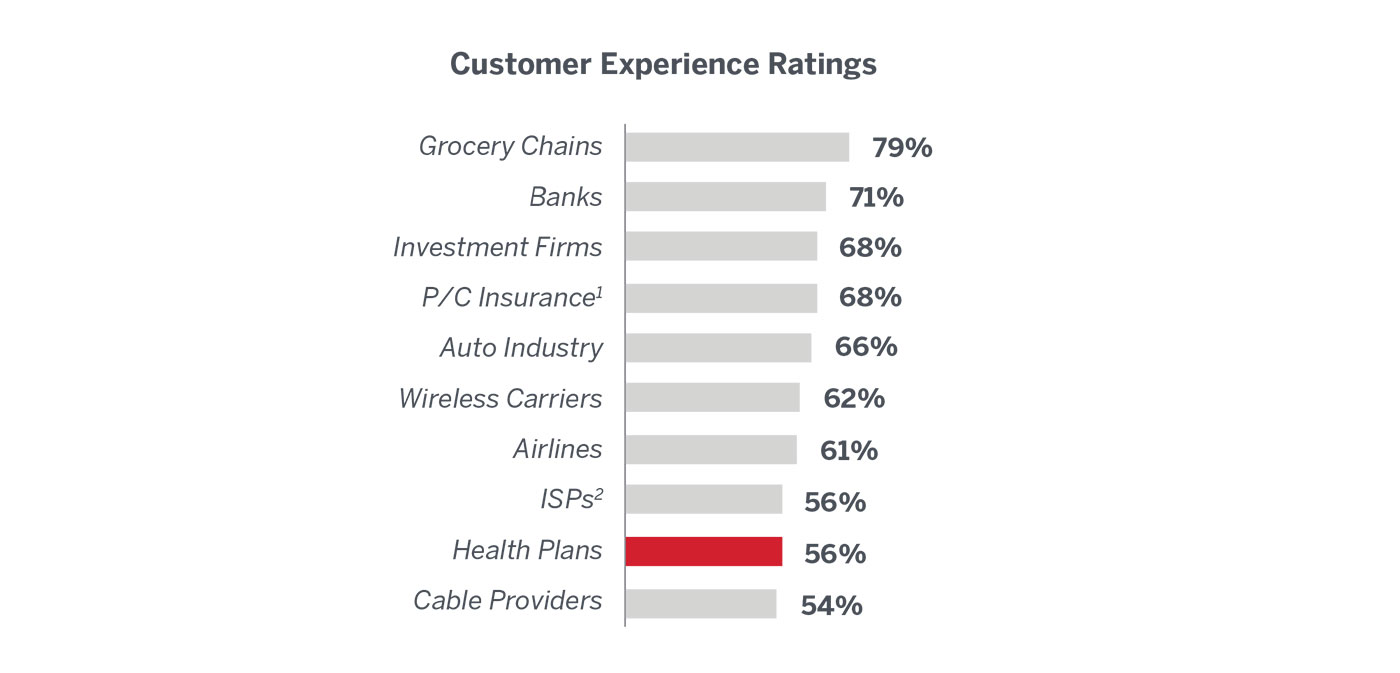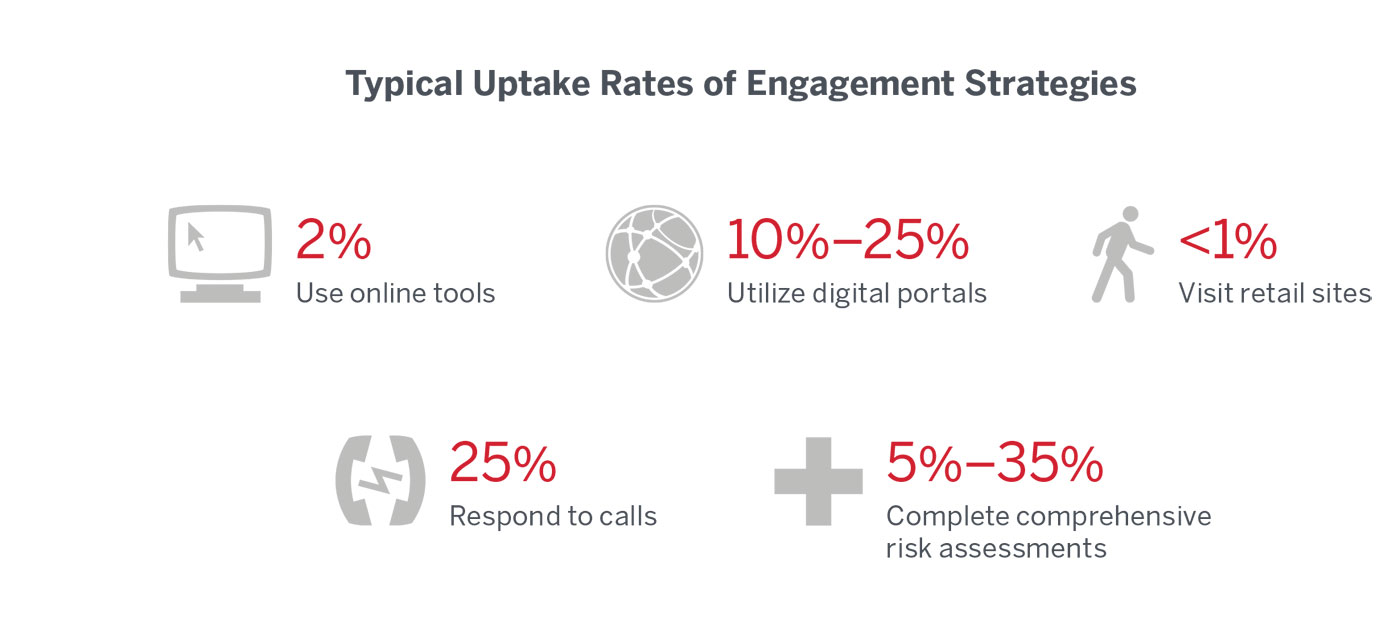Auto logout in seconds.
Continue LogoutIndividual buyers demand individual attention
By 2018, 87 million customers could be purchasing insurance in the individual market. As health plans make this transition, they’ll have to adjust to the demands of millions of stakeholders.
In an individual market, plans will have to figure out what satisfies each member, every year— whether that’s low premiums, care management, tools, etc. Now, it’s your job to find out what your new members value to retain business.
Plans want to engage with their members to overcome the historic disconnect between them
Unfortunately, customers aren’t interested in telling you about themselves. You don’t know your customers, and they don’t want to talk to you—consumers report that health plans are impersonal, untrustworthy, and opaque.
In fact, health plans are among the least popular industries, nestled between Internet service providers and cable companies at the bottom of customer experience rankings.

In the past, this didn’t affect your business much because experienced buyers understood the complexity of the situation. Now that you have to work directly with consumers, their experience could make all the difference.
Early engagement efforts are not promising
Health plans are investing in online tools, digital portals, online risk assessments, and new retail sites in hopes of providing opportunities for members to take a more active role in their health decisions. The use rates are shockingly low.

Applying diplomatic principles will help health plans balance member contact
Instead of focusing on what members are or aren’t doing, plans should think about the actions they can take to exert influence. To do so, they’ll need to borrow some ideas from the modern diplomat.
1. Establish a Lasting Rapport
Understand negotiating partners.
2. Create a Coalition
Partner with organizations that have similar goals.
3. Provide Safe Passage
Give partners space to change course.
4. Deploy Power Selectively
Selectively act to build plan legitimacy.
Don't miss out on the latest Advisory Board insights
Create your free account to access 1 resource, including the latest research and webinars.
Want access without creating an account?
You have 1 free members-only resource remaining this month.
1 free members-only resources remaining
1 free members-only resources remaining
You've reached your limit of free insights
Become a member to access all of Advisory Board's resources, events, and experts
Never miss out on the latest innovative health care content tailored to you.
Benefits include:
You've reached your limit of free insights
Become a member to access all of Advisory Board's resources, events, and experts
Never miss out on the latest innovative health care content tailored to you.
Benefits include:
This content is available through your Curated Research partnership with Advisory Board. Click on ‘view this resource’ to read the full piece
Email ask@advisory.com to learn more
Click on ‘Become a Member’ to learn about the benefits of a Full-Access partnership with Advisory Board
Never miss out on the latest innovative health care content tailored to you.
Benefits Include:
This is for members only. Learn more.
Click on ‘Become a Member’ to learn about the benefits of a Full-Access partnership with Advisory Board
Never miss out on the latest innovative health care content tailored to you.
